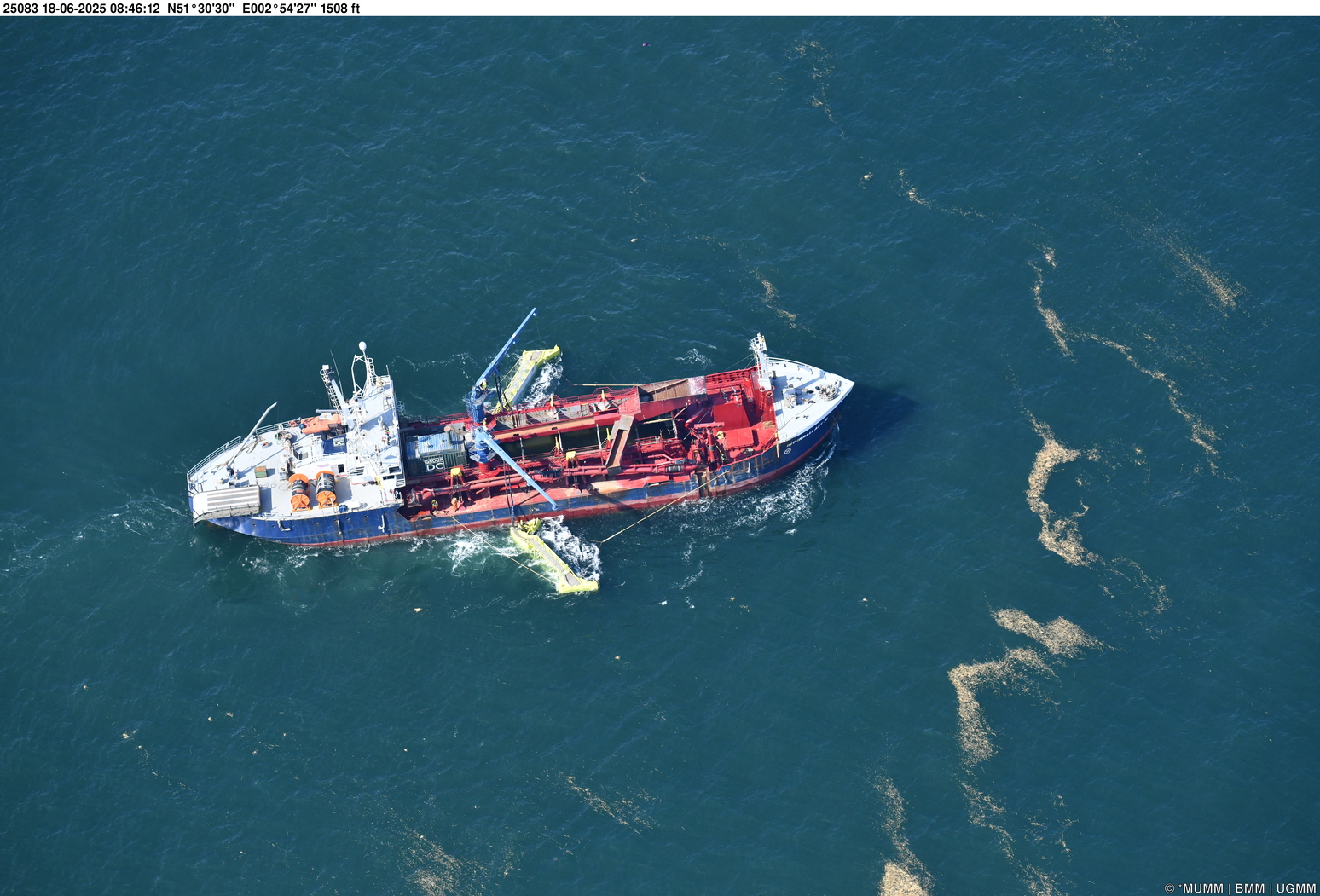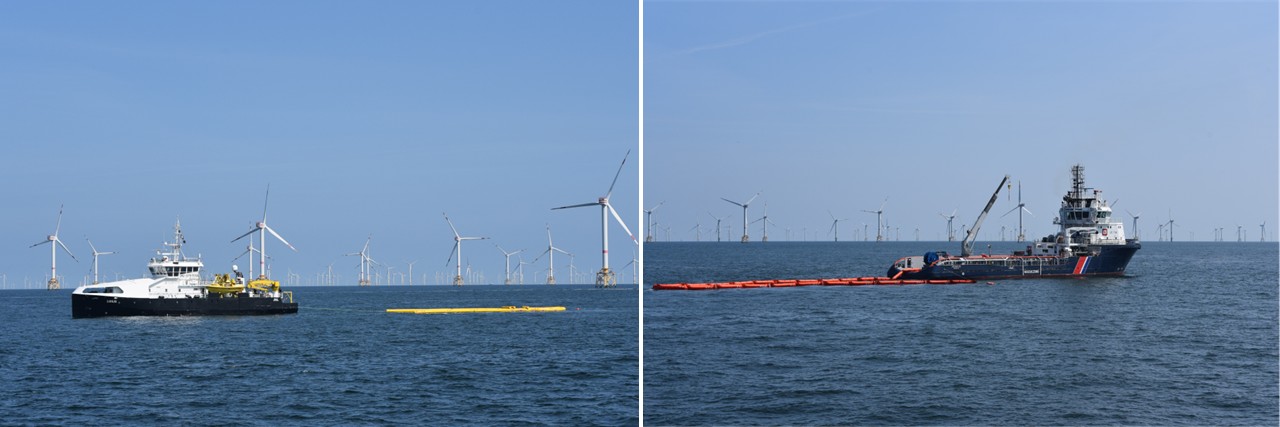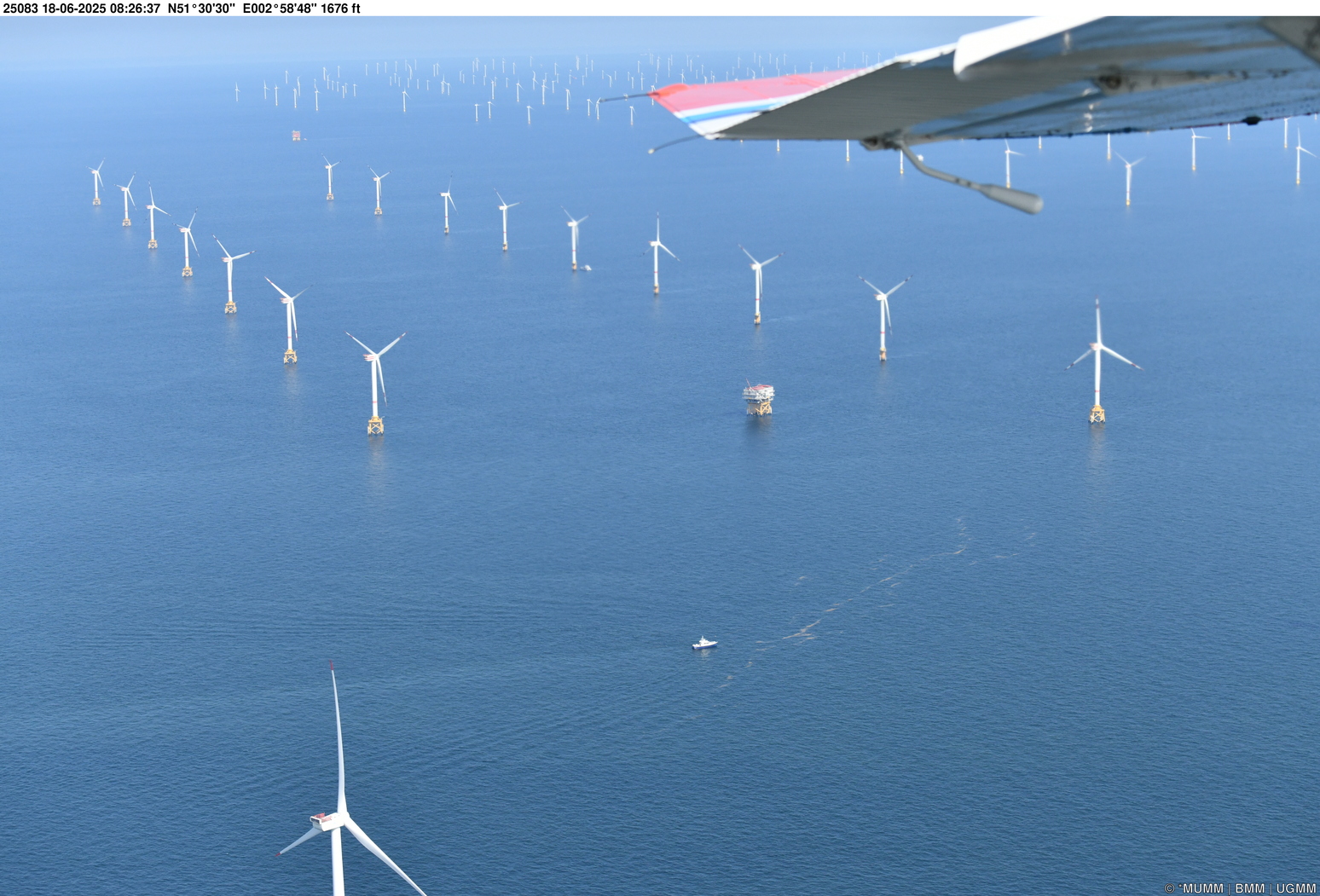Maintaining a high level of preparedness is essential for all Belgian Coast Guard partners when facing maritime pollution threats.
During POLEX 2025, Belgium’s national marine pollution response exercise that took place on 18 June 2025, the Institute of Natural Sciences contributed with two key assets: 1) the aerial surveillance aircraft provided coordination and real-time monitoring from above, while 2) model simulations developed by the Marine Forecasting Centre supported decision-making at sea.

These capabilities complemented the vessel Interballast III (chartered by the European Maritime Safety Agency), Belgian Coast Guard partners, and the French Navy vessel Argonaute in a simulated oil spill scenario near offshore wind farms.
By combining on-site response, satellite imagery, and scientific input, the Institute of Natural Sciences helped strengthen situational awareness and response coordination in this complex environment.
Exercises like POLEX 2025 are crucial to ensure that, when needed, science and operational capacity come together to protect the marine environment.

POLEX 2025 was part of the ongoing Multipurpose Maritime Operation in Belgium and France, and was coordinated by the Federal Public Service (FPS) Health. More detailed information about the exercise can be found in a news item on the website of the FPS Health (in Dutch and French).

